Resistance is Futile
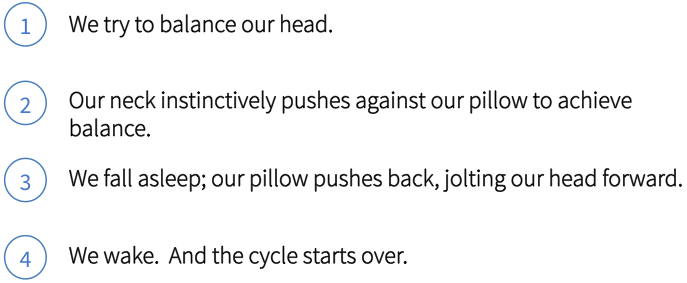
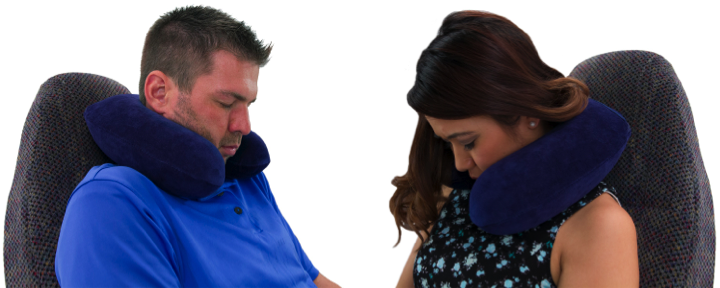
Head Droop is the New Travel Norm.
There has been a paradigm shift in how we sleep at 35,000 feet. The good news. There are more seats. The bad news. There’s less room to put down that vodka martini while navigating our ultra-slim modern day laptops. Perhaps worst, depending on one’s priorities, are the aching necks caused by our awkwardly slumped heads when sleeping in economy class.
This wasn’t always the case. Long ago, back during the Golden Age of Flight there was plenty of room to spread out. Our necks could relax because gravity only pulled our heads backwards and laterally thanks to the generous angles at which we slept.

Today, we are increasingly being forced to sleep in more upright angles because there’s now less room to recline. Naturally, when we sleep, our body tries to find a comfortable and balanced position in which to do so. Many of today’s traditional pillows are in direct conflict with this. This is because they force our neck and head away from our headrest and into uncomfortable positions, causing our head to slump forward. This makes it extremely difficult for our body to find and maintain a comfortable and balanced position. This struggle between our neck muscles and travel pillows is an ongoing battle that has the potential to cause long-term health problems.
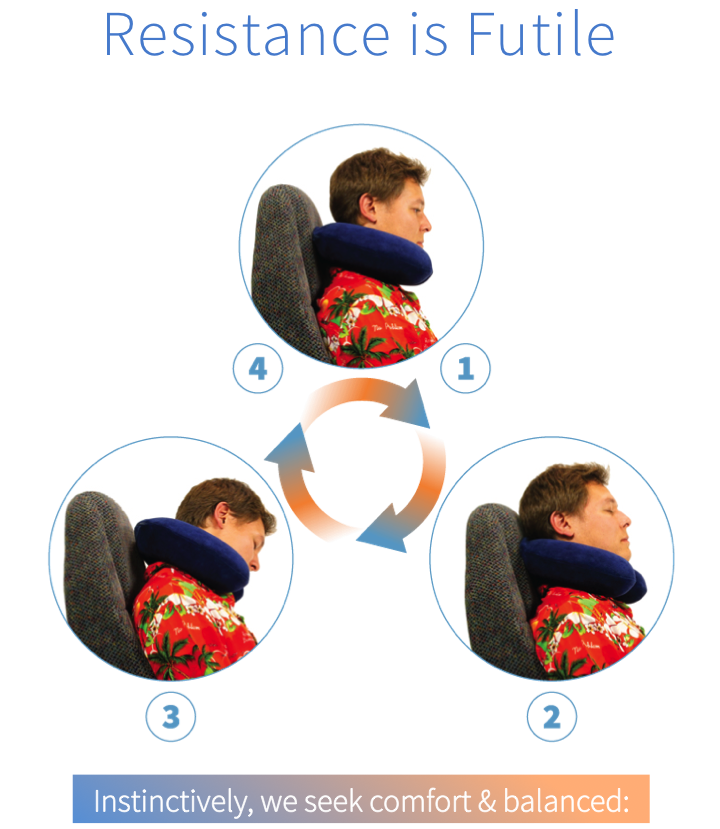

During this cycle, our cervical spine is constantly being pushed forward out of alignment and pulled back into alignment with our thoracic spine.
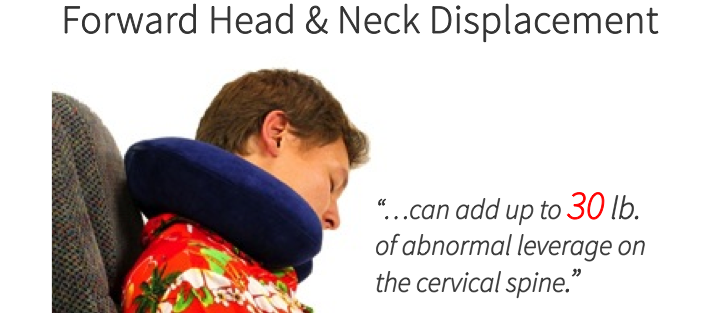
According to Rene Cailliet M.D, famous medical author and former director of the department of physical medicine and rehabilitation at the University of Southern California states:
Head in forward posture can add up to thirty pounds of abnormal leverage on the cervical spine. This can pull the entire spine out of alignment. Forward head posture (FHP) may result in the loss of 30% of vital lung capacity. These breath-related effects are primarily due to the loss of the cervical lordosis, which blocks the action of the hyoid muscles, especially the inferior hyoid responsible for helping lift the first rib during inhalation.
In simple language, the body shifts its rib cage in order to balance its forwardly displaced head. This shift can:
- Cause a decrease in lung capacity,
- Decrease blood to the brain,
- And cause fatigue.
Dr. Cailliet goes on to write that persistent forward head posture, also known as hyperkyphotic posture, puts compressive loads upon the upper thoracic vertebra, and is also associated with the development of Upper Thoracic Hump.
Inherently, many traditional travel pillows today actually increase the likelihood of forward head and neck displacement when sleeping in upright positions, making head droop and achy necks part of the travel experience. A travel pillow engineered for how we travel today is needed.
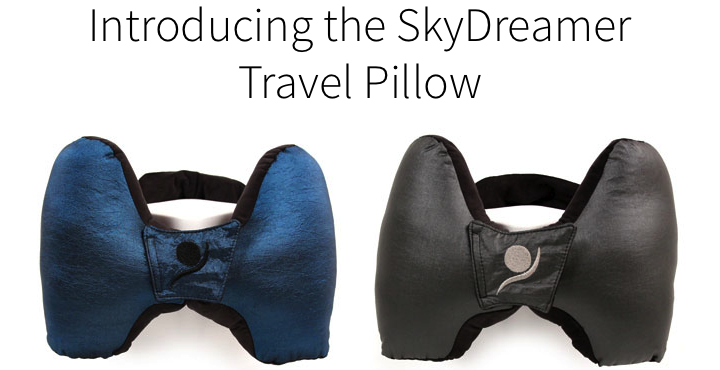
The SkyDreamer Travel Pillow was designed to eliminate sore necks and head droop from our travel experience. Optimized for spinal alignment and comfort, the Adjustable Slim Neckband does not displace the neck or head, allowing the cervical vertebra to remain in healthy alignment with the thoracic vertebra.


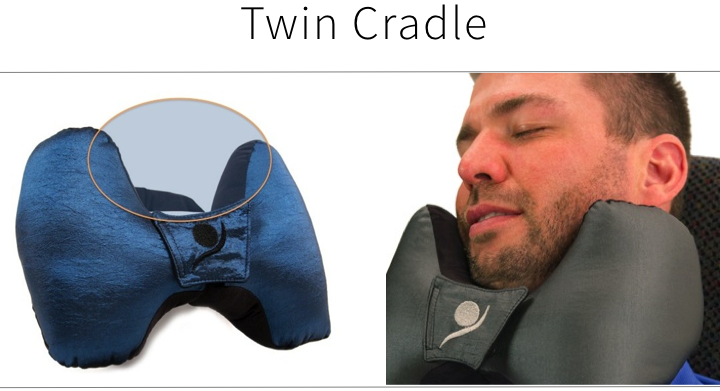
The Adjustable Slim Neckband works with the Twin Cradle to provide unprecedented support and alignment when sleeping in a near upright position, allowing our necks to finally rest while we sleep on the go!
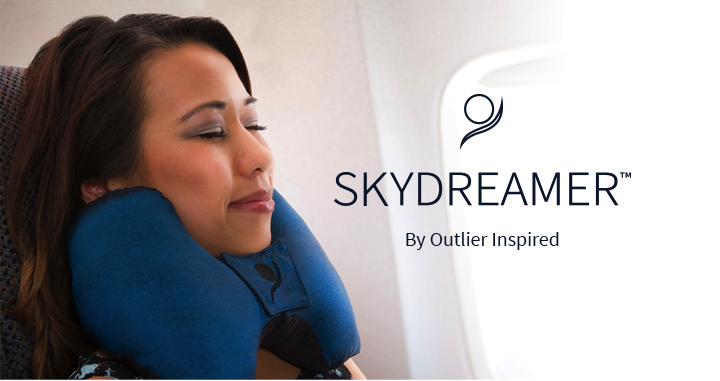
Engineered for how we travel today, the SkyDreamer Travel Pillow allows you to finally SkyDream at 35,000 feet!
Learn more about the revolutionary SkyDreamer Travel Pillow at www.outlierinspired.com. Also follow us on Facebook and Instagram for exciting new announcements and traveling tips.

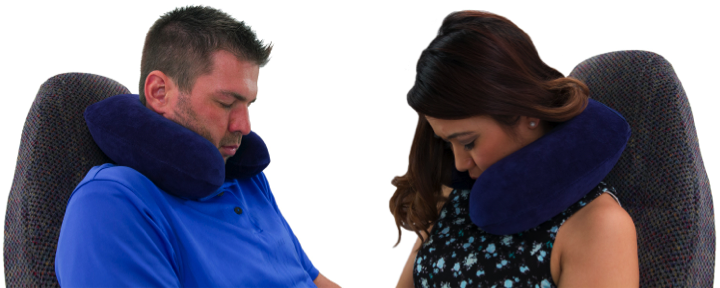


Leave a Reply
Want to join the discussion?Feel free to contribute!